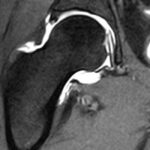
WAWADIA: Meeting Nancy Cochren (draft excerpt)
November 8, 2014
WAWADIA Update #18: One Hundred Years of Yoga in One Big Apple Day
November 12, 2014
The following essay is featured in the full WAWADIA? prospectus, released Nov 1 in support of this IGG campaign to help fund publication.
_____
1979.
Years later, I heard the story of the warrior Arjuna learning archery from his guru Drona. The target was a dead bird, spinning on a wheel overhead. Arjuna drew the bowstring and took aim. Drona asked him: Do you see the arrowhead?” Arjuna replied, “No.” “Do you see the bird?” “No.” “Do you see the space between the arrow and the bird?” “No.”
“What do you see, Arjuna?”
“I see myself.”
“Then release the arrow!”
Arjuna’s arrow threads the eye of the bird. Catching that baseball felt like that.
A t the age of 30, I went to a yoga class in Manhattan, trying to pull myself out of depression. It was at Alan Finger’s old place. The instructor was a woman my age who seemed charmed in a way that both irritated and attracted me. Like she had some pleasurable secret. Smiling, she said: “Today we’ll try to see if we can join the small self to the larger self.” The words jostled some memory of the Arjuna story, but they didn’t help my mood.
The postures in the class seemed simple, but they were extraordinarily difficult to do. And painful. I didn’t think the pain was physically damaging, because I remember feeling buoyant and relaxed for days afterwards.
The pain seemed to come from an angry recognition. Like when you fight bitterly with a brother or lover about something essential, and then try to reconcile, perhaps prematurely, with an embrace. Or when you survive something with another person— like a car crash—and you grip them tightly, as if to prove that you’re both still there. How many times, in some moment of crisis, did I squeeze my little brother hard around the neck, telling him I loved him through clenched teeth? He hugged me back fiercely, tears squeezing out of his eyes.
The sweat and pain in that yoga class was just like that. I was reconciling with a body that had survived my neglect and even abuse, a body that I also loved and depended upon, a body not quite ready to forgive me for my absence. My body reached back and gripped me in a catharsis of anguish and rage that completely dissipated when I lay myself down, trembling, into corpse pose. I disappeared into the earth.
When I came to, I rolled to my right side and opened my eyes. Sunlight poured onto my drenched mat. I found myself gazing at the palm of my left hand, the same hand that caught that ball. The same hand that plunked out base lines on the piano I used to play, and that now darts over the left side of this keyboard. But in that moment, my hand wasn’t an instrument for me to use. It was me. Somewhere I’d heard the Upanishad refrain I am that, and it came to mind like a bell ringing. I had remembered something about my existence. I am that. I have a hand. I am this hand. Through the warmth in the palm of my hand, I had joined the small self, as the instructor had said, with something much larger. This shivering present body became continuous again with the shivering present world.
I t’s my pattern to get obsessed with anything that makes sense to me, or makes me feel smarter, or gives me a little relief. So it was with yoga. I wanted to learn as much as I could. I leapt into teaching—way too soon—so I could continue to learn, and finance more learning. My diet changed for the better, and along with it, my digestion. My mood regulation got more resilient. Libido and sleep improved. I seemed to be less socially anxious. I remember walking into rooms and realizing with quiet surprise I’m standing up straight and breathing freely. How did this happen?
But it wasn’t enough. What I really wanted was to revisit that initial revelation, in which I’d felt like I’d seen myself clearly and simply. It never repeated itself. I’m not sure that you can practice to see yourself clearly. Maybe it happens when you relax the searching that amplifies all of your self-distortions.
After about five years, my efforts in practice began to injure me, although I didn’t want to admit it. Neck pain, shoulder pain, lower back pain, a partial hamstring tear that nagged my every waking hour for over a year. I was humiliated, because I’d expected asana to provide a continual upwards curve of self-knowledge, and through self-knowledge, bodily release and mental freedom. I wondered what my lack of suppleness was telling me about my psyche. I blamed my technique, and tried to learn more, which of course led to overthinking and micromanaging every movement. I blamed my supposed new sensitivity to the technologized world. I made my schedule more austere, sought out more retreat time. I blamed caffeine, and cut it out entirely. I got very attached to the idea of being non-attached to the idea of being pain-free. I blamed myself for pushing, being greedy, and tried to back off in intensity. But slowly and deliberately doing the same movements that had hurt me, still hurt me. The weird part was that these movements that I was realizing were hurtful often brought pain relief first.
I told myself that now, finally, the real spiritual work was beginning, and it was dirty. I told myself that the asanas and the meditation had finally burrowed down to find the tangled mess of my soul. Exposed, this soul could now show its wound, its unworthiness, by speaking through physical pain. The ache in my hamstring was a message in a bottle, bobbing in the ocean of memory and identity. It gave me a mythic journey to consider. It made me real. This was a very powerful story.
It felt like the surface benefits of yoga had become normalized, and lost their shine. An older teacher I respected told me: “Yoga is a deconstruction of your whole personhood: who you think you are, and why you think you’re here. It hurts. The hook is that it makes you feel good at first.”
I looked around my community and saw that everybody was still suffering: injured, anxious, depressed, insomniac, amenorrheic, disordered in their eating, struggling in work or miserable in relationship. I turned the story I was telling myself onto them: yoga had brought us all to some existential edge at which we could feel not only how deeply wrecked we were, but we could understand and even consciously embody the suffering of the larger world. We had tuned in to reality in some fateful way. There was no cure for reality but to keep practicing.
I’ll say more about this personal dynamic in the pages that follow. For today, I wonder how many of us become injured in yoga while trying to recapture the exact thing we cannot: a first revelation we had on the mat that reminded us of something else, so far gone. Can we confuse the discomfort of that revelation with the pain of trying to recreate it? Does it make sense to use a highly formalized structure of asanas to rebuild the spontaneous pleasure of childhood movements? In how many ways can it hurt to swim against the tide of time and fatigue?
T here’s another yoga moment featuring my left hand. As the pain of asana and the physical discomfort of meditation increased, I turned to philosophy and the Vedic arts. These were paths of self-inquiry that I could pursue in a posture that had comforted me from childhood: at my desk, surrounded by books. I dove into Ayurveda, Jyotish (East Indian Astrology), Vastu (Vedic spatial arrangement), and Hasta Samudrika (Vedic palmistry). This last subject felt particularly magical to me. It’s a collection of very old ideas about how experience might write itself upon the body. My teacher was Hart deFouw, and under his grumpy kindness I learned a vast catalogue of bodily markings and their supposed meanings. But most of all I absorbed the idea that the body holds a story as old as myth and as tangled as a novel, and that yoga is often a process of reading.
In one of my first seminar days with him, Hart said: “The best light to view the hand in is direct sunlight. So on your lunchbreak, go outside and look at the palm of your hand in the sun. You can do this anytime you want. You might be amazed at what you see, and how it changes.”
An hour later, I stood at the corner of Toronto’s busiest intersection and looked at the palm of my left hand in the midday summer sun. I saw a blazing, fractal map of lines and webs nested within lines and webs. Am I that? I wondered. Yes.
As a child I had become self-aware through my left hand in a moment of pure action. At 30, I remembered that my hand was there, still holding that childhood night, and that my body, which was my hand, was still me, and that I could still move and be happy in movement. At 38, I saw a story in the lines and glyphs of my skin. Perhaps all of the attention I’d paid to the asana instructions about the “movement of my skin” had left their mark, beside down-sloping lines of periodic depression, spikes of acute pain and elated discovery. The palm of my hand holds an unfinished story, which may or may not tell me who I am, but which drives me to look closely at the embodied experience of others, to see what is strange and what is familiar in our arcs of suffering and relief.